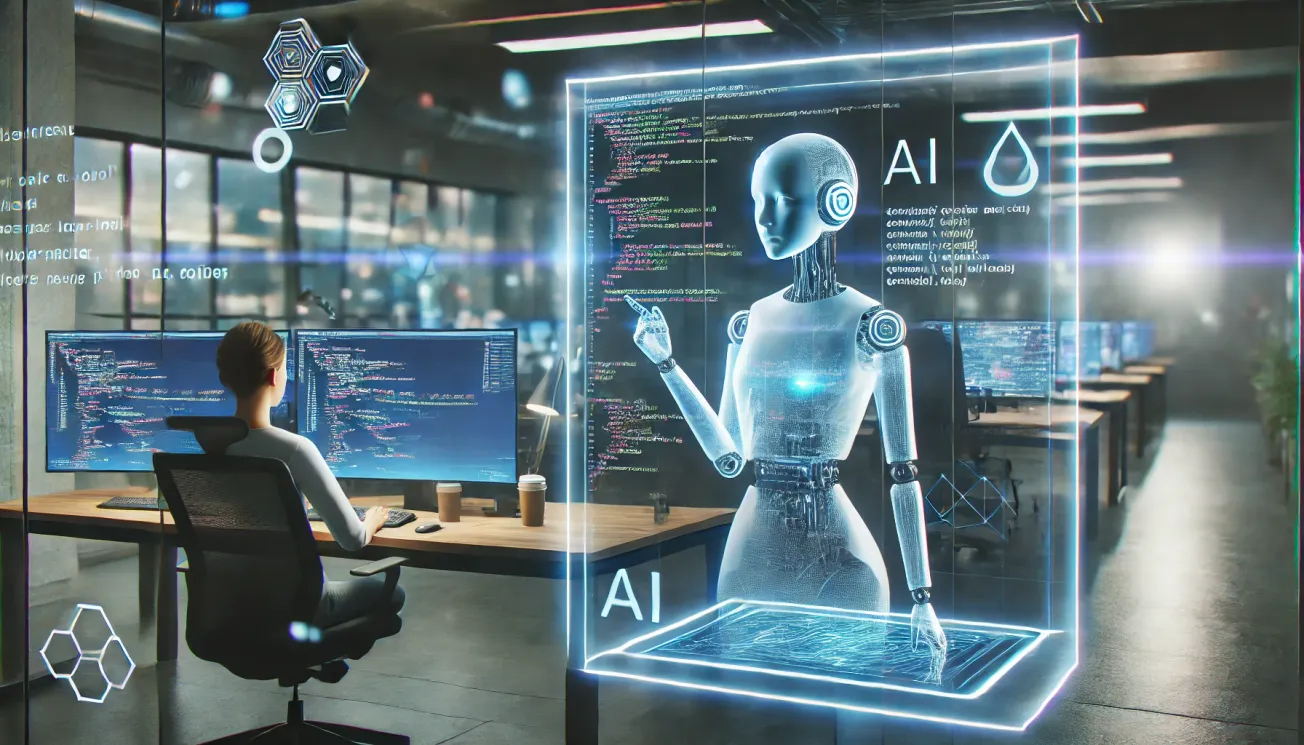Introduction
What if you could build software just by describing it? No syntax, no debugging, just pure creative flow. That’s the promise of vibe coding—a revolutionary AI-powered approach to software development that turns natural language descriptions into functional applications.
Coined by AI researcher Andrej Karpathy, vibe coding removes traditional coding barriers, allowing both developers and non-programmers to create software intuitively. Instead of manually writing thousands of lines of code, users simply describe what they want, and AI generates, refines, and optimizes the codebase.
This shift is transforming software development in 2025, accelerating innovation, democratizing coding, and redefining the role of programmers.
How Vibe Coding Works
Vibe coding operates through a three-step process:
1️⃣ Natural Language Input – Users describe their application’s features, logic, and UI in plain English (or any language).
2️⃣ AI Code Generation – Advanced AI models, trained on vast amounts of code, generate structured, optimized code in Python, JavaScript, or other languages.
3️⃣ Iterative Refinement – Users collaborate with the AI, refining outputs, tweaking functionality, and testing results—much like an interactive pair programming experience.
This intuitive process makes software development as simple as describing an idea, reducing technical barriers and increasing accessibility for creators.
Top Vibe Coding Tools in 2025
Several AI-powered tools have emerged as industry leaders in vibe coding, each pushing the boundaries of AI-assisted development:
🚀 1. Cursor Composer
An AI-enhanced IDE that allows users to generate and refine code with natural language prompts. It features:
✅ Code generation & autocompletion
✅ Deep integration with existing codebases
✅ AI-assisted debugging
🤖 2. Replit Agent
A fully integrated AI-driven coding assistant that helps users create, test, and deploy applications effortlessly. Features include:
✅ Support for multiple programming languages
✅ Real-time debugging and refactoring
✅ Cloud-based collaboration
🦾 3. GitHub Copilot
One of the pioneering AI coding assistants, GitHub Copilot has evolved into an autonomous development partner, enabling:
✅ Full application automation
✅ AI-assisted debugging & performance tuning
✅ Real-time AI-powered documentation generation
❤️ 4. Lovable Platform
A no-code AI-driven development tool that allows users to describe applications in plain language and receive fully functional code. Common use cases include:
✅ Workflow automation
✅ Event management systems
✅ Real-time data processing apps
Notable Projects & Outcomes
Vibe coding is already delivering game-changing results across industries:
🛠 1. AI-Generated Personal Tools
- A developer built a custom QR code generator as a WordPress plugin in under four hours.
- AI-powered meal planning apps analyze fridge contents and suggest recipes—built entirely using vibe coding.
🚀 2. Startup Acceleration
- Many Y Combinator startups now report that AI generates 95% of their codebases, allowing faster product launches.
- The "InstaRizz" app—a viral AI-based social tool—was built in just three days instead of three weeks.
🎓 3. Educational Applications
- Schools are integrating vibe coding into curricula, allowing students to build apps without learning syntax.
- AI-assisted learning platforms enable students to describe ideas and instantly generate functional applications.
🏢 4. Enterprise Solutions
- Corporations leverage vibe coding for business process automation, rapidly developing software for workflow management and data processing.
- AI-generated enterprise tools are boosting operational efficiency by automating repetitive tasks.
🔓 5. Open-Source Contributions
- Vibe coding accelerates open-source development, enabling contributors of all skill levels to participate more effectively.
The Future of Vibe Coding
As AI-powered development continues to evolve, several key trends are emerging:
🔥 1. Smarter AI Capabilities
- AI will autonomously debug and optimize code, reducing human intervention.
- Future systems may generate entire applications, including UI/UX elements, databases, and backend logic from simple descriptions.
🛠 2. Deeper Integration into Dev Workflows
- AI-assisted development will become standard practice, handling routine coding tasks while developers focus on architecture.
- Cursor, Replit Agent, and Copilot will continue evolving to support complex software projects.
👨💻 3. The New Role of Developers
- Human programmers will shift from coding to overseeing AI, ensuring efficiency, security, and best practices.
- AI literacy will become a core skill for future developers, focusing on guiding AI rather than writing raw code.
⚠️ 4. Ethical & Security Challenges
- The rise of AI-generated code calls for robust security measures to prevent vulnerabilities and biases.
- Ethical concerns around AI decision-making in software development will require new regulations and frameworks.
Conclusion
Vibe coding is revolutionizing software development, making it more accessible, efficient, and intuitive. By bridging the gap between human creativity and AI automation, it allows anyone—from solo developers to enterprises—to build software faster than ever before.
While security risks and ethical considerations remain challenges, the trajectory is clear: vibe coding is the future.
As AI-driven development continues to advance, we’re entering an era where coding is no longer a barrier—but a creative tool for all.






